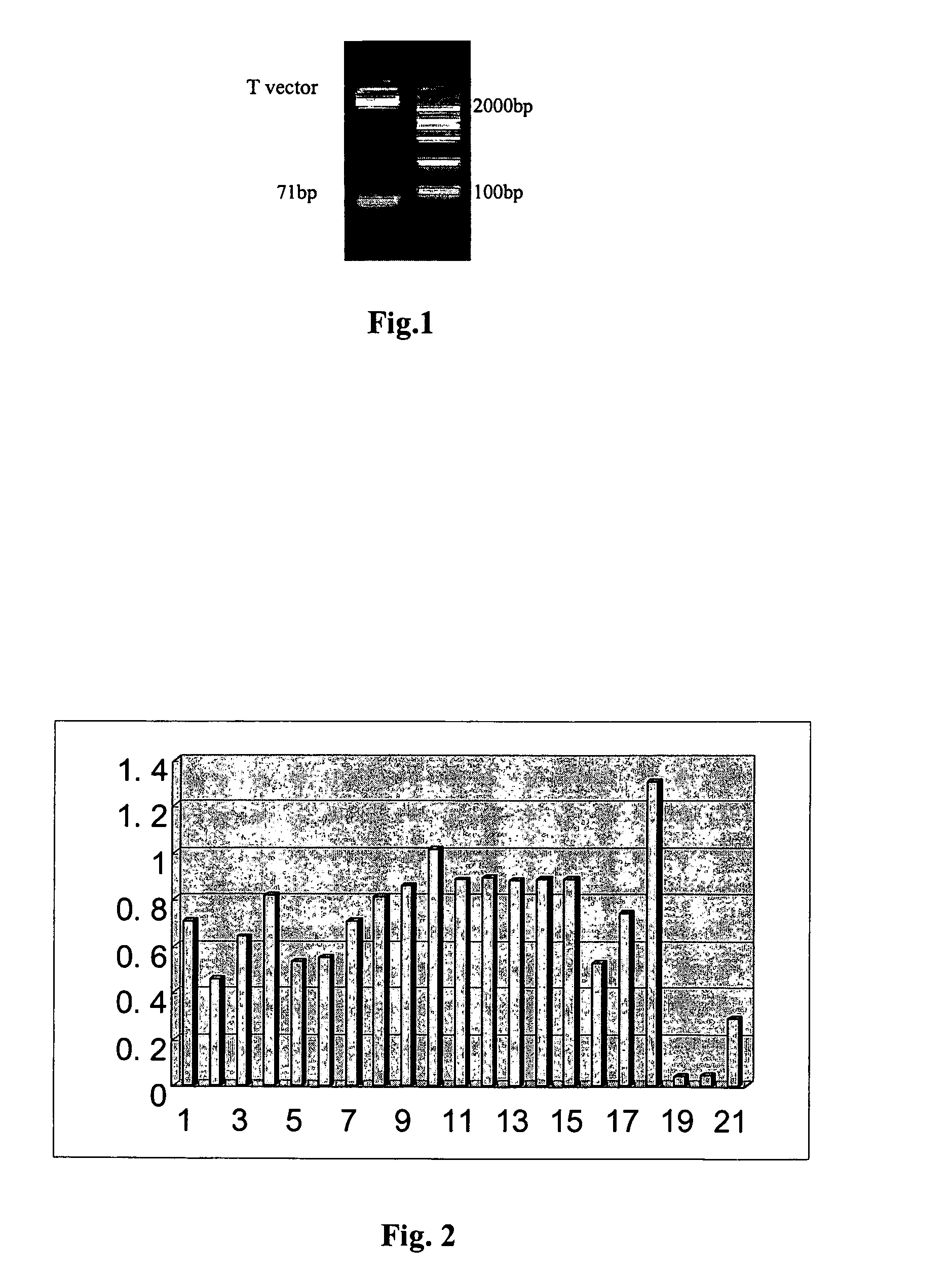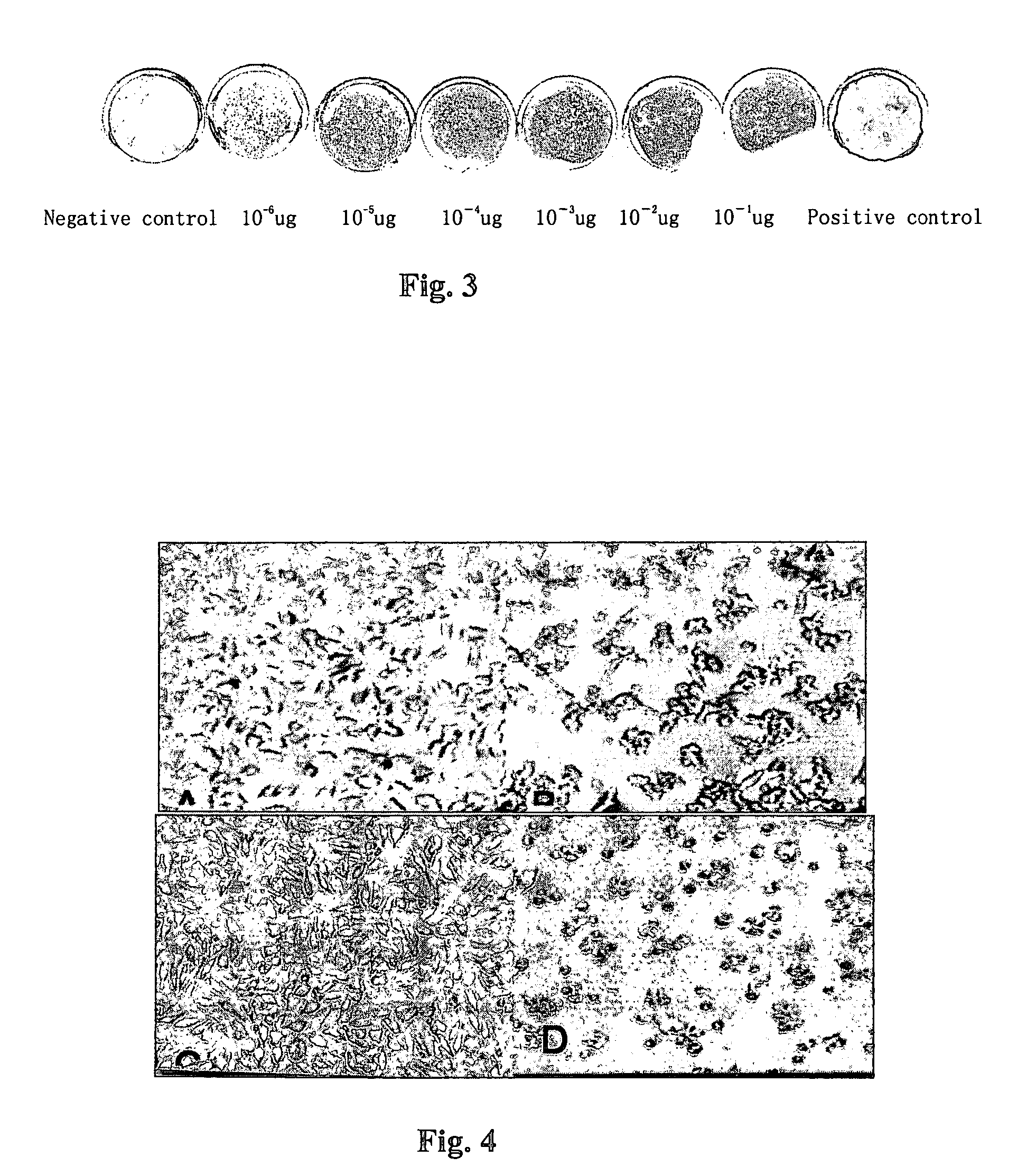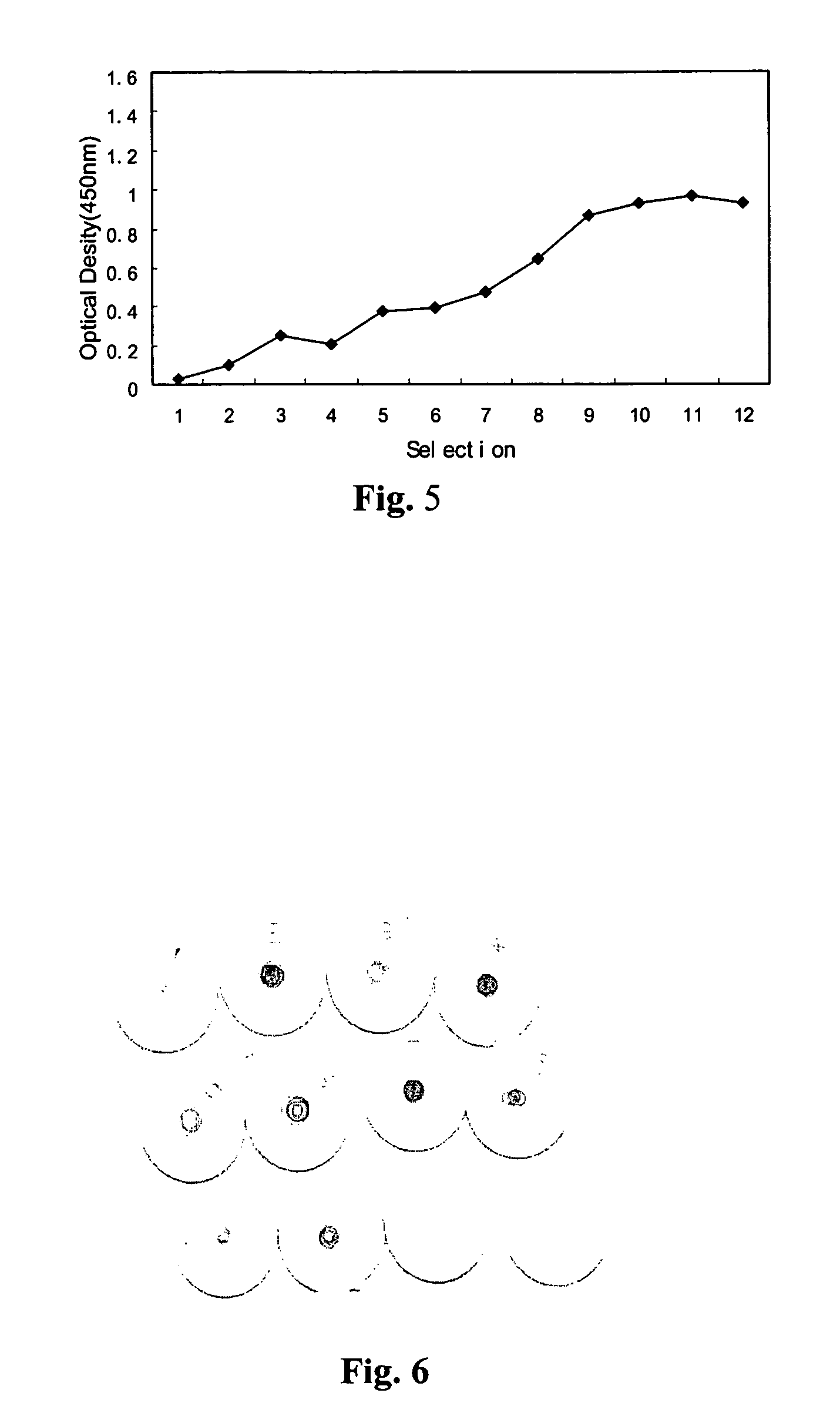Oligonucleotide antagonist for human tumor necrosis factor alpha (TNF-alpha)
a tumor necrosis factor and human tumor technology, applied in the field of new oligonucleotide sequences, can solve the problems of complex and expensive protein preparation process, drug high molecular weight, and difficult to reach the targ
- Summary
- Abstract
- Description
- Claims
- Application Information
AI Technical Summary
Benefits of technology
Problems solved by technology
Method used
Image
Examples
example 1
Select Aptamers Bound Specifically to TNF in Vitro
[0071]Amplify DNA library
[0072]The single-stranded DNA library was amplified with primer 1 and primer 2 and then, 1 μl of single-stranded DNA product was used for asymmetric PCR amplification. The product was recycled and then, 200 μl binding buffer (2×1M Nacl, 40 mM Tris Cl, 2 mM MgCl2) was added. After 5 min denatured at 95° C. and 5 min cooled on ice bath, 1 μl TNF (1 g / μl) was added and incubation of 1 hour at 37° C. was taken, followed with filtration. After washed with PBS, the product was soaked in 300 μl wash buffer (10 mM EDTA, 7M Urea binding buffer), and DNA precipitated with ethanol. A next round of selection was performed with 10 μl of the obtained solution as template. In last selections, high affinity oligonucleotides were obtained with less TNF. In total, 12 cycles of selection were made.
[0073]Clone and Sequence
[0074]After 12 cycles of selection, the selected product was bound to PGEM-T vectors (Promega). 18 aptamers ...
example 2
Analysis of Secondary Structure of Aptamers
[0075]The lowest energy of the secondary structure and the structures of the 18 aptamers was analyzed and simulated by DNASYS v2.5 software, which showed at least two kinds of specific secondary structure existed. The model I illustrates one structure, which has characteristic of double stem-loop structure (SEQ ID NO: 1). Another structure is illustrated in model II, which has characteristic tertiary stem-loop structure (SEQ ID NO: 5).
[0076]
example 3
Evaluating Affinity of DNA Aptamers with TNF
[0077]The affinity of synthesized DNA aptamers, which were labeled by biotin, with TNF were assayed by two methods.
[0078]Routine ELISA: 96-well polystyrene plate was coated with 1 μg / ml TNF and blocked for 2 h with 3% BSA at 37° C.; two times serial-diluted 5′ biotin-labeled DNA aptamers were added into each well and incubated for 1 hour at 37° C.; 100 μl Peroxidase Horseradish-labeled streptavidin at a dilution of 1 in 400 was added into the wells and was incubated for 1 hour at 37° C.; and DAB in the dark was added. The OD450 value was read by microplate reader. FIG. 2 shows the results.
[0079]Dot-ELISA: 5′-biotin-labeled nucleic acids of different concentrations was mixed with TNF and incubated in water bath for 1 h at 37° C.; the NC membrane was fixed in the filter and filtrated the mixture; the unbound nucleic acids was washed away, peroxidase horseradish-labeled streptavidin was added to the membrane and incubation was taken for 30 mi...
PUM
| Property | Measurement | Unit |
|---|---|---|
| Concentration | aaaaa | aaaaa |
| Structure | aaaaa | aaaaa |
| Cell angle | aaaaa | aaaaa |
Abstract
Description
Claims
Application Information
 Login to View More
Login to View More - R&D
- Intellectual Property
- Life Sciences
- Materials
- Tech Scout
- Unparalleled Data Quality
- Higher Quality Content
- 60% Fewer Hallucinations
Browse by: Latest US Patents, China's latest patents, Technical Efficacy Thesaurus, Application Domain, Technology Topic, Popular Technical Reports.
© 2025 PatSnap. All rights reserved.Legal|Privacy policy|Modern Slavery Act Transparency Statement|Sitemap|About US| Contact US: help@patsnap.com



